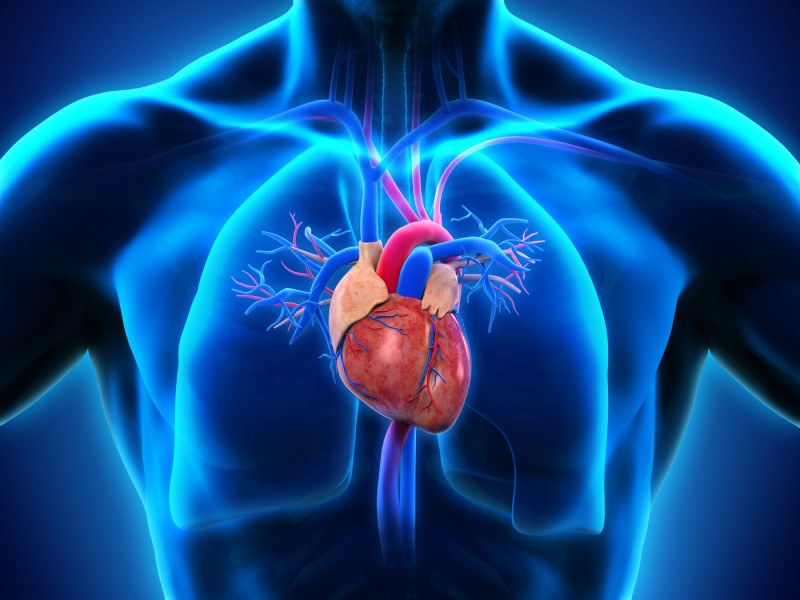AT-01 Can Detect Amyloid Deposits in Heart of Asymptomatic Patients

Attralus’ imaging agent AT-01 was able to detect amyloid deposits in the heart, even in patients without heart symptoms and with normal levels of a heart damage biomarker, according to data from a Phase 1/2 clinical trial.
The imaging agent was also able to distinguish between patients with the most common forms of amyloidosis: light-chain (AL) amyloidosis and transthyretin (ATTR) amyloidosis, which also includes familial amyloid polyneuropathy (FAP).
“Deposition of amyloid in the heart is often observed in patients with AL and ATTR amyloidosis, and yet an estimated 80% of patients with systemic amyloidosis are currently undiagnosed, and treatment begins late in the course of the disease,” Jonathan Wall, PhD, Attralus’ co-founder and interim chief scientific officer, said in a press release.
“PET/CT imaging of cardiac amyloidosis using AT‑01 affords sensitive detection of disease, even in asymptomatic people with normal levels of NT-proBNP, a highly sensitive and validated biomarker of cardiac involvement in patients with amyloidosis,” added Wall, who co-invented the experimental imaging agent.
“AT-01 is a novel diagnostic that provides the potential to change the treatment paradigm by enabling detection of all types of systemic amyloidosis at all stages of disease,” he said.
These findings were presented by Wall, who is also a professor and director of research at the University of Tennessee Graduate School of Medicine’s Amyloidosis and Cancer Theranostics Program, at the 2021 American College of Cardiology annual meeting, held virtually, May 15–17.
The poster was titled “Detection and differentiation of cardiac amyloidosis using 124I-p5+14 PET/CT imaging and the correlation with clinical biomarkers.”
Amyloidosis is the name of a group of rare disorders characterized by the buildup of abnormal protein deposits, called amyloid, in multiple tissues and organs, including the heart, which disrupt their function. FAP is a form of hereditary ATTR amyloidosis that causes damage to peripheral nerves — those found outside the brain and spinal cord — in addition to the heart and other tissues.
Currently, there are no approved methods in the U.S. “for the detection of cardiac amyloidosis, in addition to other deposits that may be present in other abdominal-thoracic organs,” Wall said during the poster’s presentation.
Amyloidosis patients typically undergo various diagnostic tests, none of which can visualize the extent and localization of amyloid deposits throughout the body.
To address this, Attralus is developing AT-01 to serve as a pan-amyloid imaging agent — a compound that can be used to visualize amyloid deposits across the body using imaging technology.
An ongoing first-in-human Phase 1/2 clinical trial (NCT03678259), sponsored by and conducted at the University of Tennessee Graduate School of Medicine, was designed to evaluate AT-01’s safety, biodistribution, and association with clinical manifestations and organ function biomarkers in about 43 adults with systemic amyloidosis.
Previous trial data showed that the investigational agent was detected in several of the patients’ organs in PET/CT images and that analyzing how much of the tracer was present in different organs allowed discrimination between AL and ATTR amyloidosis.
Newly presented interim data concerned heart-related findings in 17 adults with ATTR amyloidosis and 19 AL amyloidosis patients who completed the study.
Results showed that AT-01 was observed in the heart tissue of 72.2% of the patients, including 82.4% of those with ATTR amyloidosis, and 77.8% of amyloid patients with normal blood NT-proBNP levels.
Specifically, AT-01-positive heart tissue was present in all ATTR amyloidosis patients with high NT-proBNP levels, and in nearly all those with normal NT-proBNP levels and no heart symptoms.
This suggests that the imaging agent can detect early heart involvement in amyloid patients, before lab evidence or related symptoms can be observed. AT-01 was also able to correctly identify 95% of amyloid patients with clinical heart disease.
Further analysis showed that amyloid deposition in the heart, as assessed through AT-01, was significantly associated with NT-proBNP levels in AL, but not in ATTR amyloidosis, indicating that heart damage “elicited by ATTR amyloid may occur through different mechanisms” that are independent of NT-proBNP, Wall said.
In addition, the fact that AT-01 was detected almost exclusively in the heart of ATTR amyloidosis patients, but also in other organs in adults with AL amyloidosis, led researchers to hypothesize that these patterns could be used to distinguish these two forms of systemic amyloidosis.
By analyzing the heart-spleen ratio of AT-01 uptake, the researchers were able to discriminate ATTR from AL amyloidosis with a sensitivity of 88% (true-positive rate) and a specificity of 59% (true-negative rate).
These findings highlight that AT-01 not only can “be used for the detection of systemic amyloid, but also can provide an initial differentiation between the two major forms of the disease and provide insights into the disease processes and mechanisms,” Wall said.
According to Attralus, AT-01 may be “the first amyloidosis-specific imaging agent capable of detecting all amyloid types, in key organs, providing a complete picture of disease burden and enabling organ-specific amyloid quantification early indication of amyloid type, and monitoring response to therapy.”
Gregory Bell, MD, Attralus’ chief medical officer, said that the company is currently developing products “with the potential to remove toxic, disease-causing amyloid throughout the body with high specificity and reverse disease.”
“The AT-01 clinical data presented by Dr. Wall support our plans to utilize this revolutionary diagnostic to better identify and monitor systemic amyloidosis patients in our therapeutic programs in addition to our plan to bring AT-01 to patients,” Bell added.






